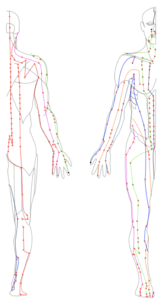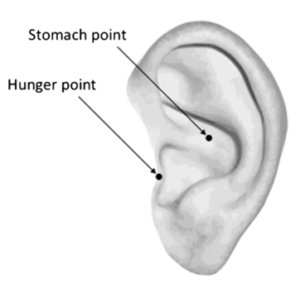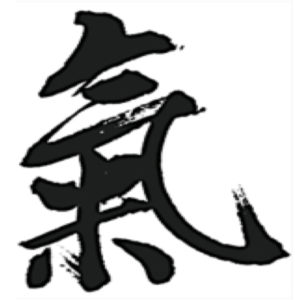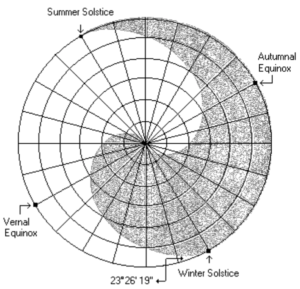Q&A for new patients
How do I prepare for my first visit?
Be sure to eat something beforehand. It’s not best to receive acupuncture on a totally empty stomach. Wear comfortable clothes. Come as you are.
What happens during the first visit?
After completing paperwork and a thorough physical examination, we will have a thorough conversation about your health, your goals for treatment, and any concerns you have. We’ll develop a treatment plan together. After that, you’ll receive a full treatment. This may include acupuncture, herbal consultation and auxiliary treatment techniques.
How long is a treatment session/visit?
The first treatment session which includes an intake paperwork and examination usually takes about 90 minutes. Follow-up treatments are between 45 and 60 minutes long.
Do you accept insurance?
Currently, we do not accept insurance. Depending on your insurance provider, you may be able to submit a claim for insurance reimbursement. We can provide you with a detailed receipt called a SuperBill to submit to your insurance company. Payment is due in full at the time of service. We accept cash, check and credit cards.
When will I see improvement?
A typical course of treatment ranges between 6 to 10 treatments, but varies depending on how long you’ve had the condition, and how much we collaborate on the healing process. Results vary by individual and specific condition.
General questions about East Asian medicine
What is traditional East Asian medicine?
Traditional East Asian medicine (TEAM) is based on concepts of qi, channels (meridians), acupuncture points, and yin yang from the Huang Di Nei Jing (The Yellow Emperor’s Classic of Internal Medicine, circa 250 BCE). The main purpose of Traditional East Asian medicine is to bring the body back into harmony or homeostasis when environmental and internal (mental, emotional) stressors cause imbalance and illness. Traditional East Asian medicine includes traditional Chinese medicine (TCM), traditional Japanese medicine (TJM), traditional Korean medicine (TKM) and traditional Vietnamese medicine (TVM) which are still practiced in Asia and based on the Yellow Emperor’s Classic of Internal Medicine.
What are channels, acupuncture points, qi, and Yin Yang?
 12 Channels/ Meridians |
Channels or meridians – Based on the Yellow Emperor’s Classic of Internal Medicine, channels are network systems throughout the body which transport vital substances to support physiological functions. Langevin, the director of the National Center for Complementary and Integrative Health (NCCIH), and Yandow who conducted extensive acupuncture research proposed that channels may be the connective tissue planes of the body. |
 Auricular acupuncture points |
Acupuncture points are specific points along the channels (connective tissue planes). Langevin and Yandow hypothesized that the network of acupuncture points and channels are likely located near connective tissue intramuscular fascial planes.1 |
 Character for Qi |
Qi (“chee” or “ki”) may be the sum of all energetic phenomena where channel qi is equivalent to the biochemical or bioelectrical signaling of connective tissues.1 Blockage of qi which manifests as pathological conditions may be seen as any abnormal or altered signal transduction in the connective tissues. With acupuncture, we can override the altered signal transduction to remove blockage of qi which is causing pain. |
 Yin Yang- Seasonal cycle |
Yin yang– A simple definition of yin and yang are dynamic opposite and complementary forces that interact with one another in nature. Yin yang can be applied to explain the workings of almost any system occurring in nature. For instance, yin and yang can be applied to the feedback loop in regulating sympathetic (active/yang) and parasympathetic (resting/yin) responses which seem to be opposites but are interdependent responses to bring the body back to homeostasis and sustain life. Traditional East Asian medicine therapies can help regulate yin and yang functions to bring the body back to homeostasis. |
What are common traditional East Asian medicine therapies (acupuncture, electroacupuncture, acupressure, cupping, herbal medicine, moxibustion)?
- Acupuncture involves the stimulation of a specific acupuncture point along channel pathways on the body by the insertion of needles to prevent or modify the perception of pain or to normalize physiological functions, including pain control for the treatment of certain diseases or dysfunctions of the body, and includes the techniques of electroacupuncture, cupping, and moxibustion. Why do we use acupuncture? By inserting acupuncture needles strategically in acupuncture points, we signal the body’s healing mechanisms.
- Electroacupuncture (EA) involves the application of small electric current by attaching negative and positive electrodes to a pair of acupuncture needles to modulate the frequency, intensity and duration of electrical stimulation. Electrical stimulation via varying frequency, intensity, and duration mediates anti-inflammatory responses via autonomic nerve activity. At low and high frequencies, EA can stimulate different types of opioid receptors and produce different analgesic effects.
- Acupressure is pressure applied to specific acupuncture points without penetration of the skin to produce a therapeutic response.
- Cupping– Cupping devices are usually applied on the back but it can be applied to other parts of the body. The practitioner uses cupping devices to produce a suction or vacuum effect resulting in what I would describe as an inverse massage therapy. Whether cupping is applied alone or in combination with acupuncture, studies have shown cupping may help relieve conditions such as arthritis, muscle tension, back and neck pain, and facial paralysis.
- Herbal medicine– In Traditional East Asian medicine, herbal medicine is usually a combination of herbs rather than an isolated single herbal product, unlike other supplements sold commercially in the U.S. Tao to Health offers herbal medicine in the following forms: patented pills, capsules, granules, powders, tinctures, and packaged prepared herbal teas that meet good manufacturing practice (GMP) standards.
- Moxibustion is one form of heat therapy in Traditional East Asian Medicine. Moxibustion is derived from the herb, artemisia sinensis/vulgaris, commonly known as mugwort. The dried mugwort floss is combined with other dried herbs and packaged as what looks like a cigar, known as a moxa stick. The moxa or dried mugwort is burned and applied indirectly to the affected area usually on or near acupuncture points. The expected therapeutic effect is warming of the channels.
What is constitutional medicine?
Constitutional medicine is personalized medicine that involves looking at the whole person, including the patient’s past and present symptoms as well as inherited patterns of weakness, and using a comprehensive approach to address each individual’s unique root problem. Korean Sasang medicine is one system of constitutional medicine. Other systems of constitutional medicine are Ayurveda or Traditional Indian medicine and homeopathy.
References:
- Langevin, H.M., & Yandow, J.A. (2002). Relationship of acupuncture points and meridians to connective tissue planes. The Anatomical Record, 269; 257-265.
- National Certification Commission for Acupuncture and Oriental Medicine. (2014). The NCCAOM Certification in Oriental Medicine. Retrieved from https://www.nccaom.org/wp-content/uploads/pdf/OM%20Certification%20Brochure.pdf.
- National Certification Commission for Acupuncture and Oriental Medicine. (2014). The NCCAOM Certification in Acupuncture. Retrieved from https://www.nccaom.org/wp-content/uploads/pdf/Acupuncture%20Cert%20Brochure.pdf.
